Buttery Cornmeal Crescent Rolls
Light, flaky and absolutely soft and tender, these buttery cornmeal crescent rolls are decadent, delicious and perfect for any occasion.
A few weeks back, my Aunt Marilyn sent me a new roll recipe that uses cornmeal and milk as the base.
Enter: major skepticism. But I trust my Aunt implicitly, so I gave them a go. Before I offer my verdict, let me explain that I don’t need a new roll recipe. I have several that I love and use all the time.
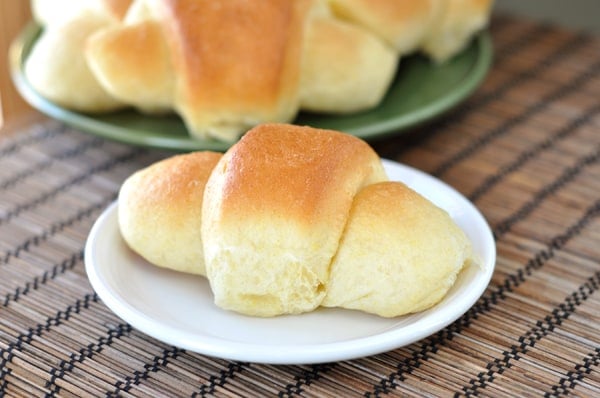
I’d much rather spend my time looking for new double-chocolate-anything recipes than roll recipes.
But let me tell you, these cornmeal crescent rolls have skyrocketed to my new favorites. I feel slightly disloyal to my other faves, but the truth cannot be withheld. They are deliciously unreal.
If making them six times (yes, six!) in the last three weeks, including making 100 of them for a church function, is any indication, then yes, they are my new favorites.
Light, flaky and absolutely soft and tender, these rolls are decadent in their butteryness and while you can’t taste the cornmeal as a main, strong flavor, the subtle texture and lightness it provides is essential to the success of these beauties.
I can’t stop making them. I really can’t. Please, oh please, someone join me in my happy carb-induced nirvana.
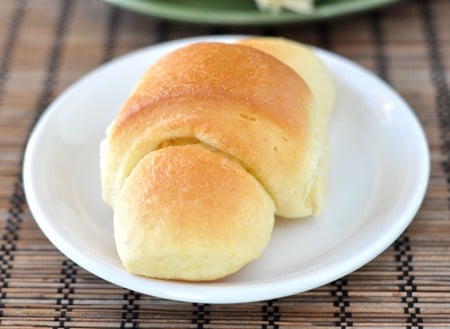
FAQs for Buttery Cornmeal Crescent Rolls
I’d suggest making the dough, letting it rise, shaping the rolls, and then letting the rolls refrigerate overnight. But if you don’t have the fridge space to do that, pop the dough in the fridge right after you make it (no rising) and let it rise the next day out of the fridge (it will probably puff and rise a bit overnight in the fridge, too).
I’ve used 50% wheat and 50% white flour with good results!
Yes, I bake and cool the rolls then freeze in ziploc bags. You then gently rewarm them, and the texture is still great.
One Year Ago: Schoolyard Cupcakes
Two Years Ago: The Best Blueberry Muffins
Three Years Ago: Solid Peanut Butter Cups
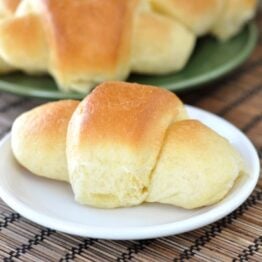
Buttery Cornmeal Crescent Rolls
Ingredients
- 2 cups milk
- ⅔ cup (113 g) yellow corn meal
- 1 ½ tablespoons instant yeast
- ½ cup (113 g) 1 stick butter
- ⅓ cup (71 g) granulated sugar
- 1 teaspoon salt
- 3 large eggs
- 5 ½ – 6 cups (781-852 g) cups flour (see note)
Instructions
- Heat the milk to just below a boil so bubbles are just appearing around the edges (this is called scalding milk). Add the cornmeal and cook and stir until thickened, lowering the temperature if needed so the mixture doesn’t boil (see picture below the recipe for an idea of what the consistency should be).
- Pour the cornmeal/milk mixture into the bowl of a stand mixer or a large bowl and let cool until lukewarm. Add the yeast, butter and sugar (if you dissolved active dry yeast with a bit of water and sugar until it foamed, add it now). Mix.
- Add the salt and eggs. Mix well. Add the flour gradually until a soft dough forms. Knead for 5-8 minutes.
- Transfer the dough to a lightly greased bowl covered with lightly greased plastic wrap and let rise until doubled.
- Divide the dough into three portions and roll each into about an 8-10 inch circle. Brush the top lightly with butter. Cut into 8 wedges and roll each wedge up starting from the wide end so it forms a crescent roll shape.
- Place each roll on a lightly greased or silpat- or parchment-lined baking sheet, spacing about 1-2 inches apart to allow for rising. Cover lightly with greased plastic wrap. Let the rolls rise until doubled.
- Bake at 350 degrees for 10-12 minutes, until lightly browned. Brush with butter while still warm.
Notes
Recommended Products
Recipe Source: adapted slightly from my Aunt Marilyn who got the recipe from her friend, Anne K.
Here is a picture of what the consistency of the cornmeal/milk mixture should look like when it is done cooking and thickening.

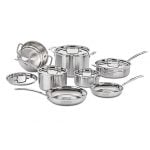
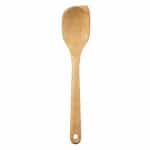
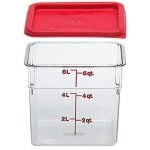
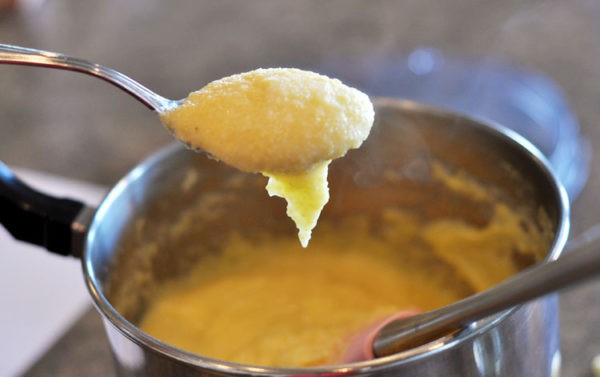
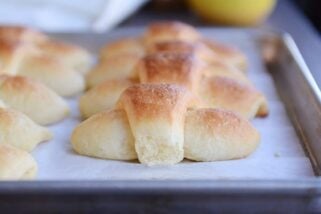
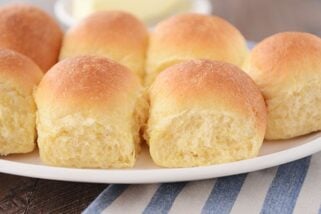
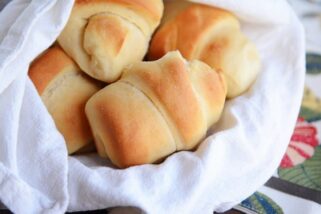
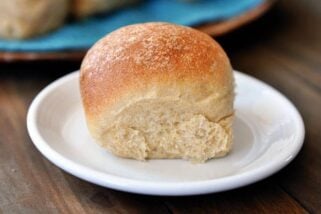
I have made these rolls dozens and dozens of times. Admittedly, I didn’t scroll through all of the comments to see if this question had already been answered/addressed, so my apologies if I’m beating a dead horse.
I had problems with clumping cornmeal at first, too. I am not sure why, but no matter how I mix the cornmeal in, if my milk is already warm/warming, it will clump.
Instead, I pull out a whisk and VERY SLOWLY sprinkle the cornmeal into the cold milk, whisking the whole time.
I’ll add may a teaspoon or so at a time, make sure it’s mixed in, and then add another teaspoon.
After all the cornmeal is missed in, I slowly heat the milk until it’s the consistency in your pics. This whole process takes me 10-15 minutes but has been foolproof for me.
Even my very picky eaters beg for these rolls!
My batch had zero flavor. I know I didn’t skip the sugar… Hmm, I wonder what went wrong.
Hi Andrea, any chance the salt was left out?